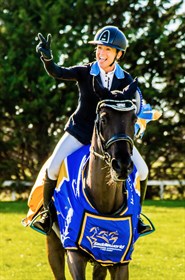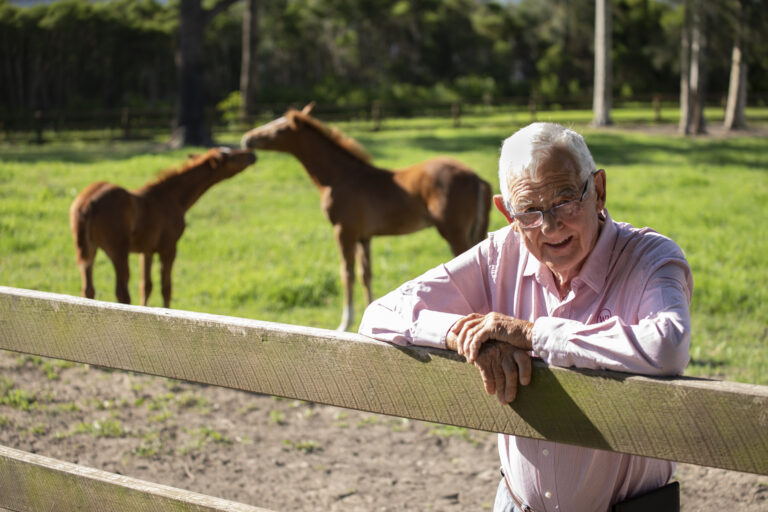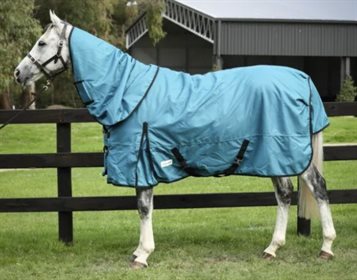Amanda Ross and Koko Popping Candy.
© Geoff McLean/Gone Riding Media
We take a look back on this article by Amanda Ross, which was originally written as a ‘to-do’ list for event riders once the eventing season finishes and winter sets in. Well, it’s not quite winter but covid-19 has certainly ended the eventing season – so we figured these tips could be the perfect antidote to isolation boredom!
BY AMANDA ROSS
ALL THOSE WEEKENDS camping in the float or the truck, those Monday mornings soaking white saddlecloths, Thursday gallops in the sideways rain, and every last cent spent on pentosan, entry fees and fuel are now vacant spaces in a once chock-full diary usually dedicated to one thing … eventing. For those competing at an event such as Melbourne CCI, the following month of gloomy, wintry July is a good time for a few weeks’ rest for a hard-working event horse. However, there are plenty of riders and horses not looking for a break. So what do you do with an overactive eventer when it’s dark, cold and wet with no competitions to enter? Here are my suggestions for equine winter-tainment.
INSIDE JOBS
• Clean up your tack room/feed room
This could be like opening Aladdin’s Cave or tidying a bomb site, depending on your tendencies. Horses = dirt. Inevitably. My tip – buy a Blow and Vac, remove everything from one wall and attack the nooks and crannies. Remember, this machine works on the theory of what goes up must come down. There’s no point just blowing the dust off, you need to suck it up as well. Throw everything that’s not clean in the wash, bleach anything needing a spruce up, reroll bandages, pair up work boots, check the vet box for items out of date or that need replacing (thermometer batteries), wash your grooming brushes. This is a serious task. I’m talking days of entertainment, a task not to be embarked on at 4:30pm.

Throw everything that’s not clean in the wash!
• Buy storage containers
The typical female loves buying plastic boxes. Extend this to the stables – horses and shopping, win-win! Winter rugs are in use, so summer rugs can be cleaned and packed away in plastic boxes. The wash bay surely needs a drainable plastic rack for shampoos, sponges, and scrapers, and a towel shelf? Work boots need containers for front/hinds, bell boots, cross-country and jumping boots, and maybe extra hooks for that expanding bit collection. Oh, and a whip rack. Rugs can be divided and put in a different box for each horse or each size. By this point, you may also need either a selection of coloured markers or a labeller if you are really professional!
• Clean your tack
It took me six hours one rainy day to clean all my tack properly. I mean, take it all apart, use glycerine soap and scrape off every skerrick of dirt, then oil and/or cream it. An epic afternoon! Checking your gear for safety is imperative, so write a list of what needs repairing, take them to be fixed, and replace the unsalvageable. This may also call for some online equestrian shop browsing for items which, on a rainy day, may lead to an online shopping extravaganza!

Get the tack room looking ship-shape!
• Practice bandaging
If your bandaging looks more like two pairs of aerobics legwarmers, then it’s time to perfect the skill. Your horse’s legs are its most valuable commodity, therefore your bandaging skills need to be faultless to protect them. Lump-free, evenly spaced and pressured, going from top to bottom and back up again, covering the necessary joints, using the right-sized bandage pads, as well as tightly rerolling the bandages properly, will have you bandaging like a pro groom in no time.
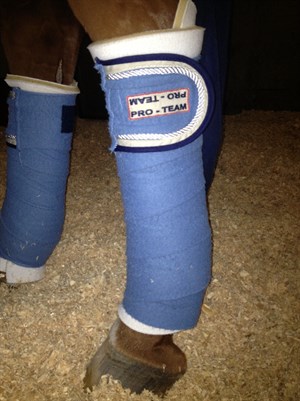
Why not practice bandaging in your spare time?
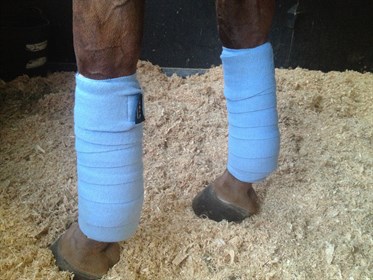
It’s a skill that requires practice.
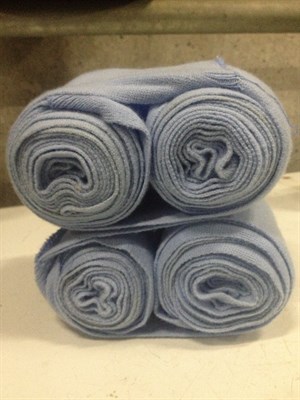
Don’t forget to perfect re-rolling them!
• Plug stud holes and spray studs with WD-40
You can get the rust off studs by (a) using them, then (b) with a squirt of WD-40. To make cleaning the dirt from stud holes easier, plug your horse’s stud holes with cotton wool and Vaseline. Should your horse lose a shoe when out, set aside a recent set of shoes in good order for each horse, tape them together with the horse’s name and date the shoes were last worn, and leave them in your float as spares. Sorted.
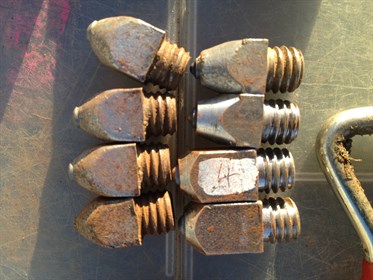
You can get the rust off studs by (a) using them, then (b) with a squirt of WD-40.
• Plan your next season (NB – this is a little tricky at the moment until we know when competitons are likely to re-start!)
This calls for a visit to Officeworks. Sit yourself down with a coffee, a yearly planner, coloured whiteboard markers, and the next season’s events calendar. Fill in horse trials, fitness work program days, worming/vaccinations, farrier appointments, lessons. Hang this in your tack room, take a photo of it, co-ordinate with your iCal, and you have a system to rival any PA!
• Take on your own fitness program
Hello spare-time-not-riding! No excuses! Now is the time to form a new habit before you start riding again. Book in with a personal trainer, start running/swimming/cycling/Pilates/boxing – whatever takes your fancy. Give yourself a timeframe and go gangbusters, you’ll be surprised at what you can achieve. And as I say, it’s always good weather in the gym.
OUTSIDE ACTIVITIES
• Train skinny fences and apexes on the arena
You don’t need a cross-country course to really perfect this skill. Blocks, drums and short poles make ideal skinnies and apexes which you can arrange in any combination.
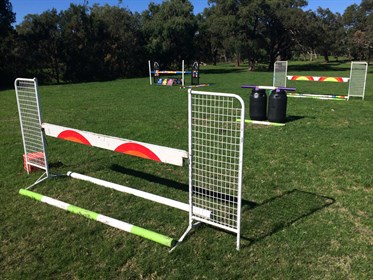
Skinny training.
• Improve your seat by riding without stirrups
George Morris does this once every week. He’s 75. There goes everyone’s excuse! If the last time you did this was in pony club, then it’s time for a challenge.
• Go hacking out with a friend
Let’s face it, the arena gets boring. Your eventer needs to get out and about, so freshen up both your souls by going on a “working trail ride” (sorry, I don’t do trail rides … but if they were productive I would definitely enjoy it). It’s a way of keeping fit and getting used to different terrain, spooky things, and socialising the pair of you.
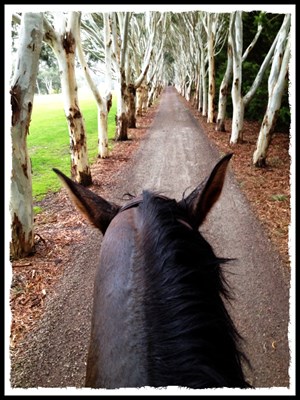
Hacking out is always fun!
• Focus on that movement you find most difficult
If your walk to canter needs work, or the medium trot is letting you down, book in for a series of lessons and have a red-hot go at improving this aspect. There’s nothing worse than trying to work on three phases at once when you have competitions every second weekend … something always has to give. Without the pressure of competitions, there’s time to patiently and diligently take the training back to basics and really instil some correct and lasting work.
• Paint your show jump poles
Nothing looks better and replicates the real thing more than a bright set of show jumps. Make some fillers, buy plastic flowers and funk it up a bit. Google exercises, and set up a course, a new grid or training concept. Inspiration is key.
Personally, I look forward to having a less hectic schedule where I can relax a little. I do miss riding, so I bring the boys in regularly for a good groom, a check-over and some TLC. For my fitness, I try to find new places to run, spend a little more time at the gym, and see the physio. Often the younger horses will have their time in the sun, so more time can be spent developing their skills and confidence. My tack room definitely needs a tidy, there will possibly then be a tack sale, and I really need to wash my car and float … OMG, the off-season sounds busy already!
READ THE LATEST NEWS ARTICLES HERE

